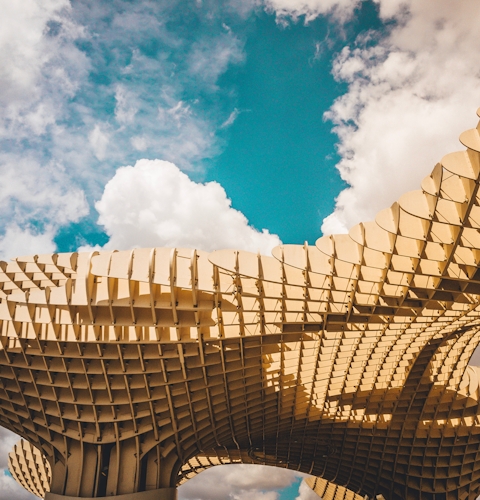
Heard of Game of Thrones? Well, you're in for a treat!
Game of Thrones Locations around Seville
02/2022 - Sahar Saini
Game of Thrones premiered on HBO in the United States in 2011 and concluded in 2019, with 73 episodes broadcast over eight seasons. This timeframe is just a year longer than the series's timeline as it was set in 298 AC and concluded in 305 AC, taking place around seven years. I grew up these last eight years the same way millions of people worldwide did—waiting for the next season. My life felt a bit empty when the show came to a close, so needing an excuse to travel, I decided to discover various Game of Thrones locations around the world. I’m yet to complete that quest, but I can already tell you, that Seville is a personal favourite.
If you're a Game of Thrones fan and happen to be in Andalucia, visit various locations in Almeria, including the Alcazaba fortress in the city and the Tabernas desert. The impact this show has had on tourism is huge. Hopefully, this will continue for years to come, as this series won’t get old and will be enjoyed well into the future.
The Alcazar of Seville – Dorne's Water Gardens
Season five was shot here, and, did you know, a prominent local (now national) politician bumbled onto the set and caused havoc while the show was being shot? Anyway, visiting the Alcazar provides new insight into the filming of Dorne scenes. The Alcazar's royal palace portrays the Water Gardens of the southernmost of the Seven Kingdoms, ruled by Doran Martell. Filming can be a massive boost to the tourism industry, and Google searches for flights to Seville were reported to have gone up by 107% since season five started airing. Sevillano hotels and restaurants are sure to be rubbing their hands in anticipation of the many fans who are eager to come and tread the same ground as their favourite kings and princesses, knights and squires, and court whisperers. Game of Thrones was filmed in four parts of the Alcazar: the Ambassadors' Hall, Mercury's Pool, the Baths of Maria Padilla, and the gardens.
Italica – the Dragon-pit in King's Landing– Season 7
Then there's the Roman site of Italica, in the town of Santiponce, ten kilometres from Seville. Founded in 206BC, Italica (whose name derives from Italy) was not an important town but its status improved when some of its inhabitants became wealthy and important. In those days, prosperity came from grain (wheat) and olive oil – millions of tons were exported to Rome.
This wealth reached a new level when Trajan, a general born in Italica, became emperor in 98AD, and Italicans were riding a wave in Rome. The buildings we see today date from this era, of the nova urbs (new town), built on higher ground than the original town, which is underneath the modern-day Santiponce. Italica's good fortune continued when Trajan's nephew Adriano (who built Hadrian's Wall in England) succeeded him. You can see large, formerly luxurious villas with beautiful mosaic floors in the nova urbs, as well as a temple to the deified Trajan.
In terms of Game of Thrones, the scenes were shot in the amphitheatre, which is very large for such a small town, seating 25,000 spectators. The theatre was built on the banks of a river that the Romans rerouted. It hosted gladiatorial combats with wild boars and bears from Osuna in its day. There were three days of subsidised shows with free food to win over the public and encourage them to vote for the politician/patron.
The amphitheatre was used as the Dragon-pit, a vast circular domed building in King's Landing previously destroyed by fire. Much speculation surrounds these scenes, as many main characters were here for the filming, including Khaleesi the Mother of Dragons, Lannisters, and Jon Snow.
Osuna – Danzak’s Pit, Meereen – Season 5
Osuna's bullring takes on the role of the mightiest of these in episode 9 (where we also see Alcazar's famous gold ceiling): Danzak's Pit scene of a significant battle featuring hundreds of nobles, slaves, and Khaleesi's fire-breathing beasties, which have already caused concern among the populace by roasting lambs and small children alike with their flame. I'm not a fan of bullfighting, but this arena is a sight as it's the setting for such a spectacular sequence. It dated from 1904 and was designed by Anibal Gonzalez, who built Seville's magnificent Plaza de España, the centrepiece of the Expo 1929. It seats 5000. It’s an impressive space; you can get a good idea of its scale by climbing up to the top and walking all the way around. One of the reasons why this arena was chosen was because of the similarity to the stone in Croatia, where other scenes in this city were shot. The director reportedly thought Osuna to be a magical place. At the same time, the actors felt so comfortable that they brought their families to stay – unlike in Seville, they were largely left alone by the locals.






